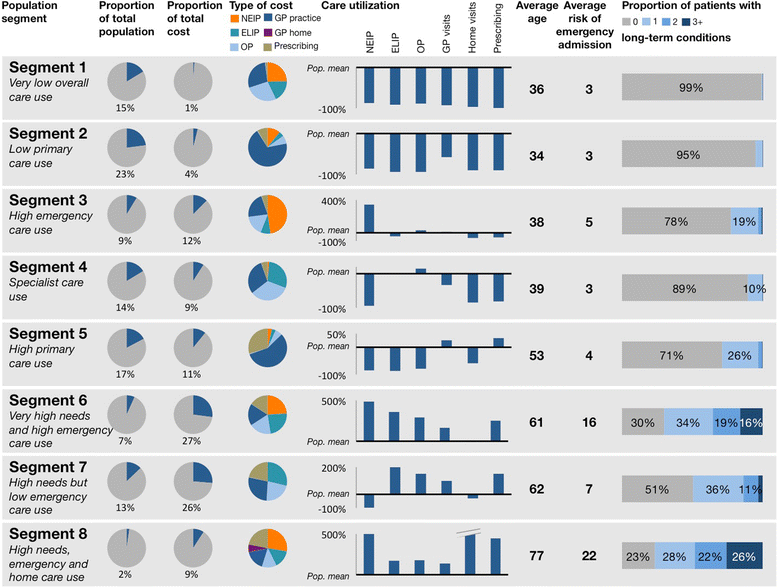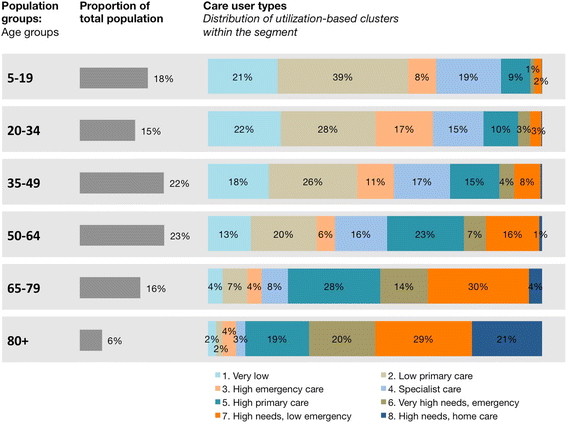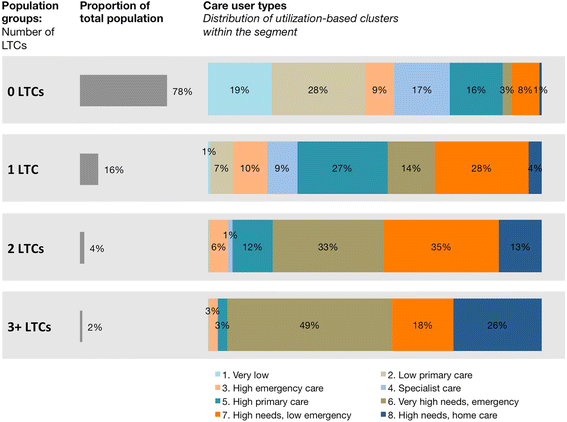A quantitative evidence base for population health: applying utilization-based cluster analysis to segment a patient population
- PMID: 27906004
- PMCID: PMC5124281
- DOI: 10.1186/s12963-016-0115-z
A quantitative evidence base for population health: applying utilization-based cluster analysis to segment a patient population
Abstract
Background: To improve population health it is crucial to understand the different care needs within a population. Traditional population groups are often based on characteristics such as age or morbidities. However, this does not take into account specific care needs across care settings and tends to focus on high-needs patients only. This paper explores the potential of using utilization-based cluster analysis to segment a general patient population into homogenous groups.
Methods: Administrative datasets covering primary and secondary care were used to construct a database of 300,000 patients, which included socio-demographic variables, morbidities, care utilization, and cost. A k-means cluster analysis grouped the patients into segments with distinct care utilization, based on six utilization variables: non-elective inpatient admissions, elective inpatient admissions, outpatient visits, GP practice visits, GP home visits, and prescriptions. These segments were analyzed post-hoc to understand their morbidity and demographic profile.
Results: Eight population segments were identified, and utilization of each care setting was significantly different across all segments. Each segment also presented with different morbidity patterns and demographic characteristics, creating eight distinct care user types. Comparing these segments to traditional patient groups shows the heterogeneity of these approaches, especially for lower-needs patients.
Conclusions: This analysis shows that utilization-based cluster analysis segments a patient population into distinct groups with unique care priorities, providing a quantitative evidence base to improve population health. Contrary to traditional methods, this approach also segments lower-needs populations, which can be used to inform preventive interventions. In addition, the identification of different care user types provides insight into needs across the care continuum.
Keywords: Care utilization; Population health; Population segmentation.
Figures



References
-
- Alderwick H, Ham C, Buck D. Population health systems: going beyond integrated care. London: The King’s Fund; 2015.
Publication types
MeSH terms
LinkOut - more resources
Full Text Sources
Other Literature Sources

